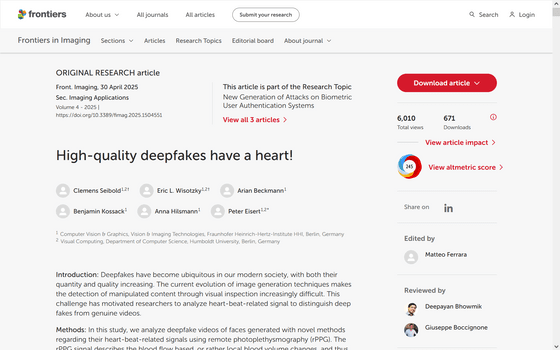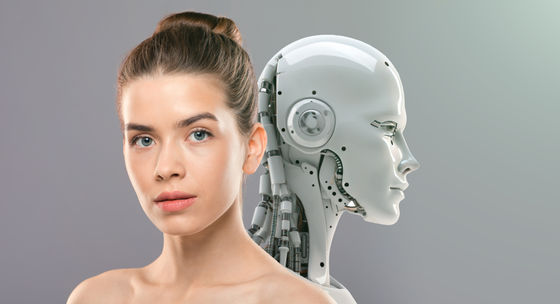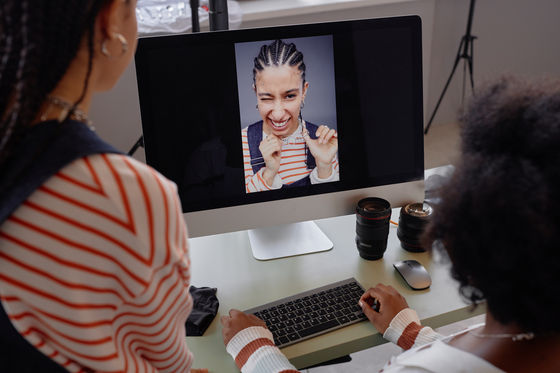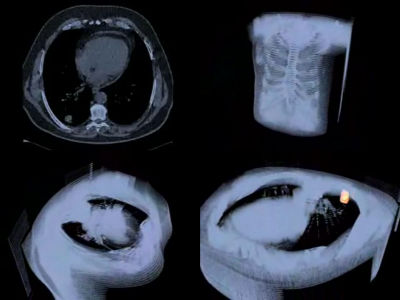AI-generated videos now include a 'heartbeat', making deepfakes even harder to detect

AI technology related to video is improving day by day, with Google announcing '
Frontiers | High-quality deepfakes have a heart!
https://www.frontiersin.org/journals/imaging/articles/10.3389/fimag.2025.1504551/full

Deepfakes now come with a realistic heartbeat, making them harder to unmask | EurekAlert!
Deepfakes just got even harder to detect: Now they have heartbeats | BBC Science Focus Magazine
https://www.sciencefocus.com/news/deepfakes-have-heartbeats
Peter Eisert of Humboldt University and his colleagues tried to use a medical technique called remote photoplethysmography (rPPG), which detects changes in blood flow and color when light passes through the skin to estimate pulse rate, to see if they could detect heartbeats from video footage.
Eisart and his team developed a deepfake detector that automatically extracts and analyzes pulse rates from videos of people's faces that are only 10 seconds long, and then checked the pulse rates of real people in videos. The results showed that the detector was surprisingly accurate, with only a deviation of about 2 to 3 beats per minute compared to the electrocardiogram records of the subjects.
Next, Eisart and his colleagues used the latest deepfake techniques to replace the faces of the subjects in the video with AI-generated ones, and then measured the pulse rates again.
As a result, even though Eisart and his colleagues did not give any specific instructions, the deepfake video clearly reflected a heartbeat, and the pulse rate was at a level almost identical to that of the original video.

'Our results suggest that when creating a deepfake, it's possible to unintentionally 'inherit' a heartbeat from a real video - subtle variations in the skin tone of a real person could be transferred to the deepfake, along with facial movements, recreating the original heartbeat in the fake video,' Eisart said.
Previously, it was thought that deepfakes could not reproduce signals subtle enough to fool rPPG-based detectors, but that assumption no longer holds.
However, Eisert and his colleagues believe another detection method could be useful.
'When your heart beats, blood flows through your veins and into your face. There's a slight time lag in the movement of blood flow across your face, so by detecting subtle changes in blood flow, we can identify whether or not it's a deep fake,' said Eisart.

However, Eisart argued that more focus should be placed on technologies that can prove that footage has not been tampered with, and that developments such as 'digital fingerprinting' that would leave invisible evidence in the footage are also needed.
Related Posts:
in Software, Posted by log1p_kr







